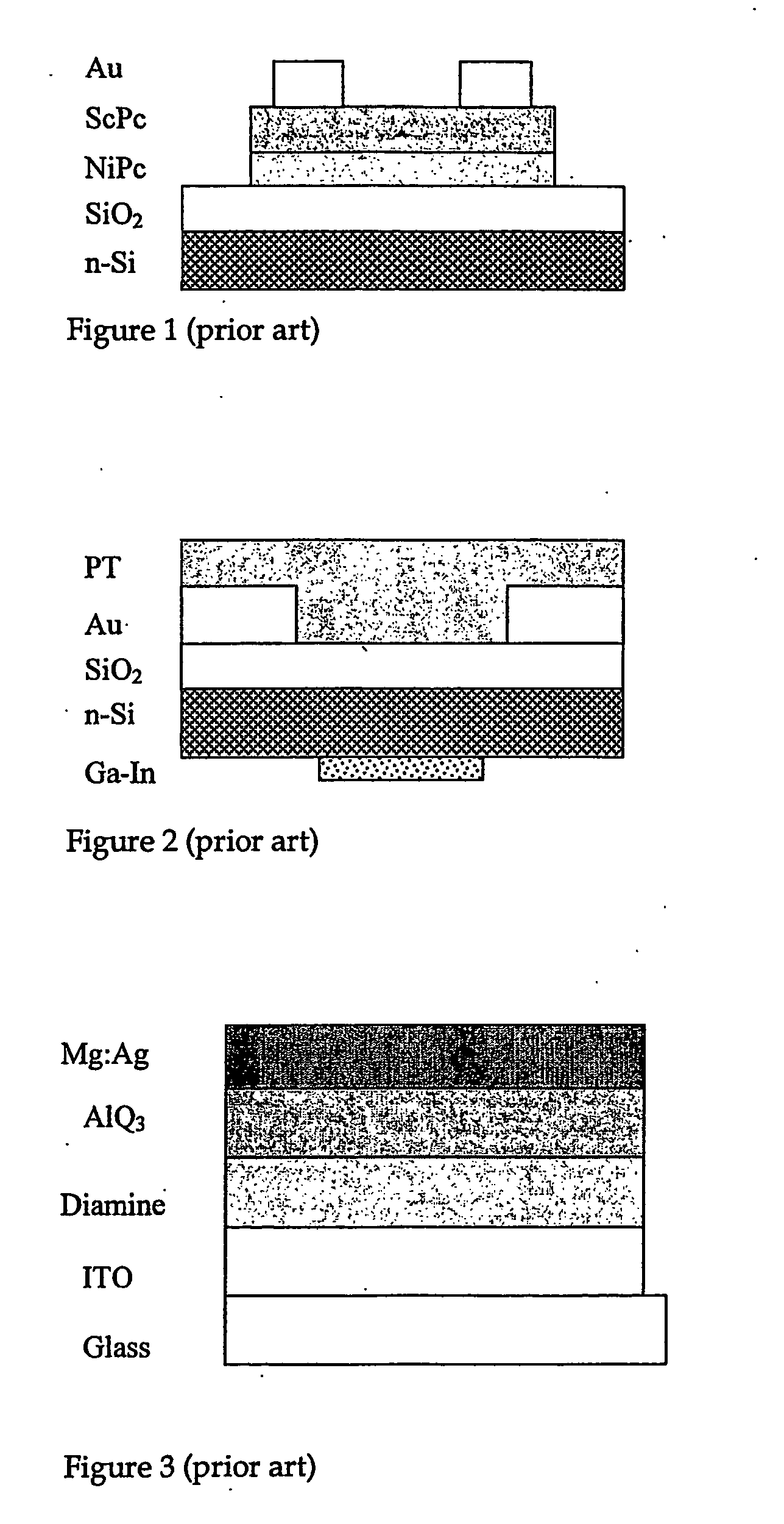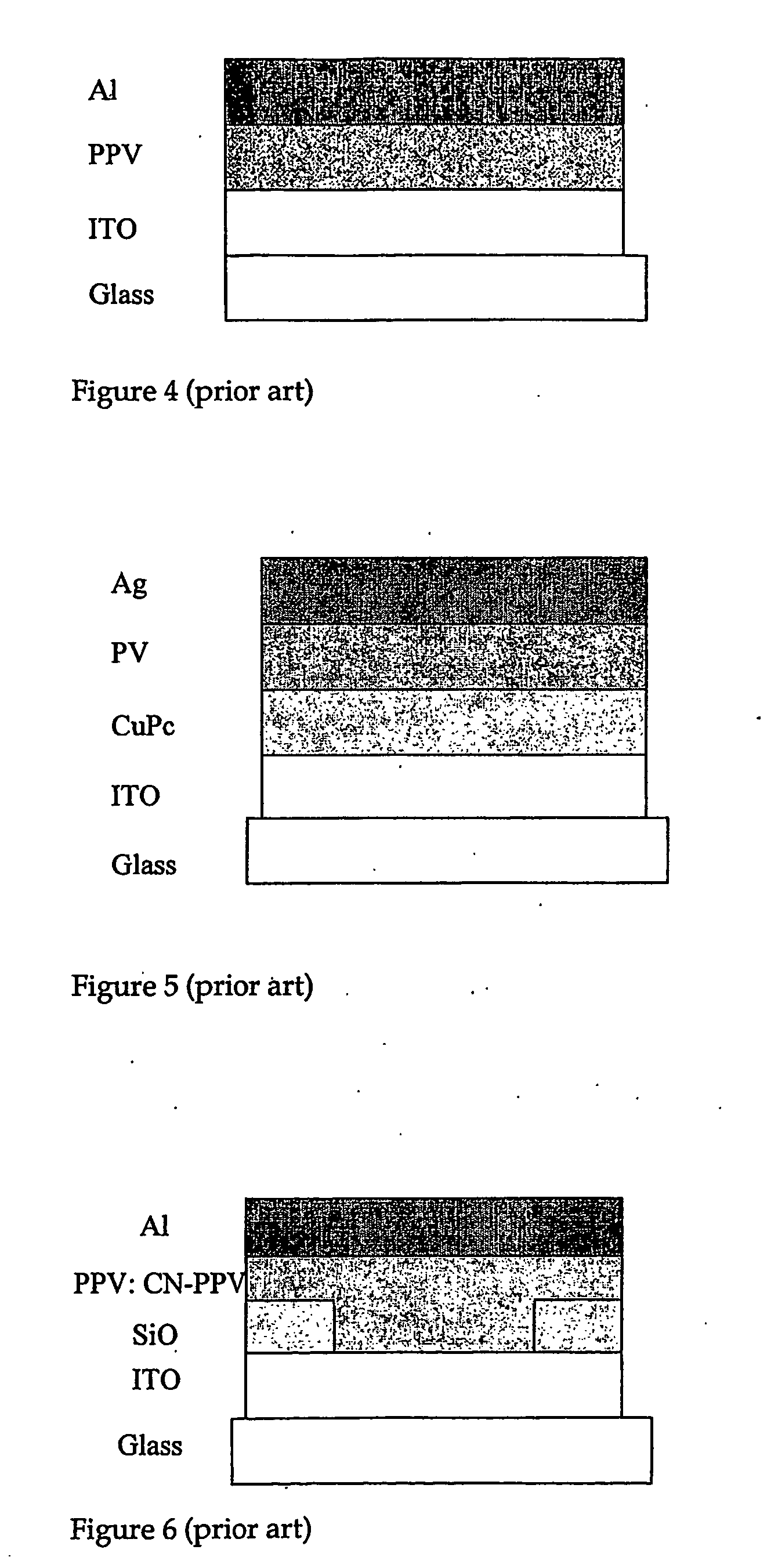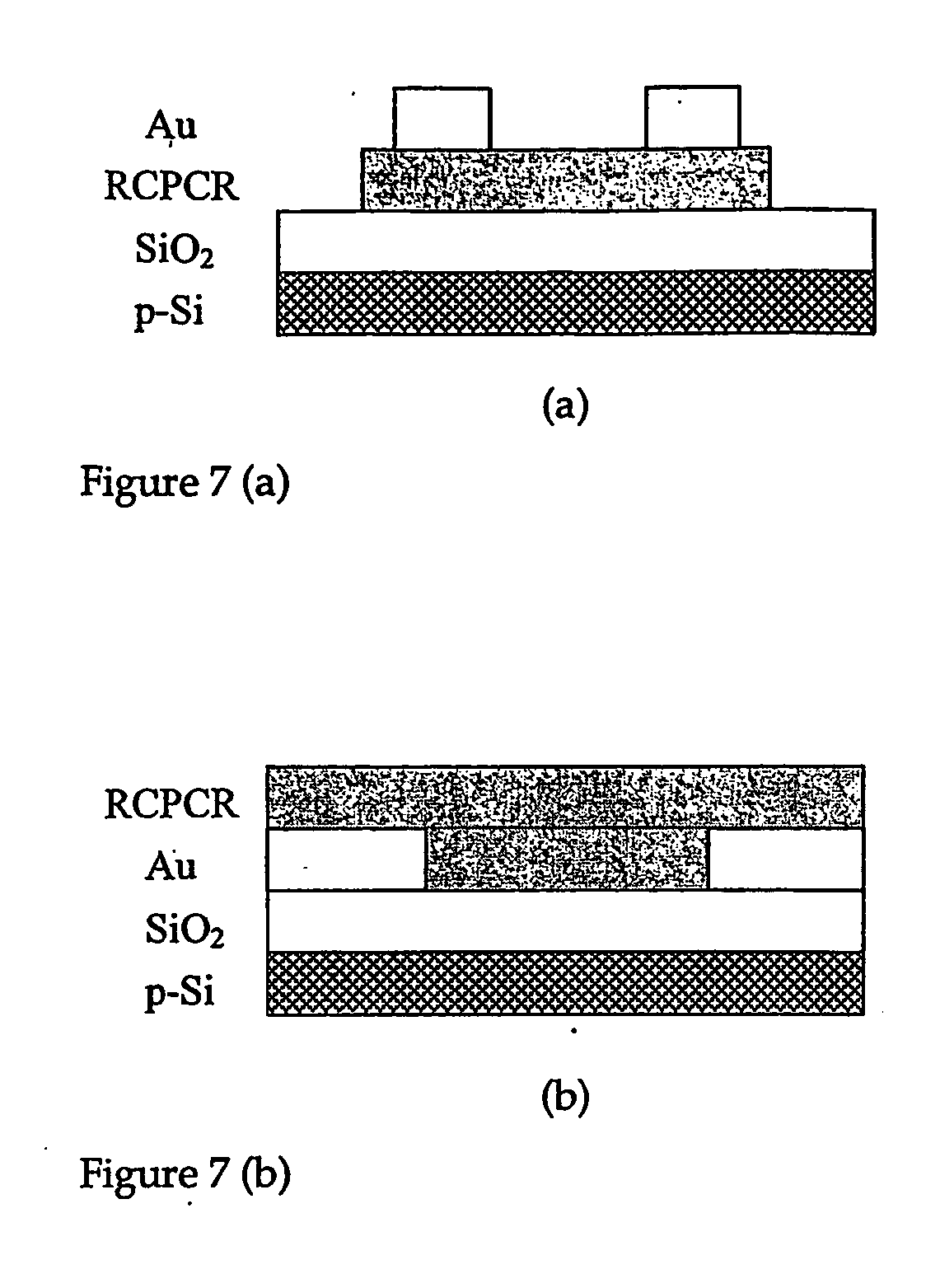2,7-Carbazolenevinylene derivatives as novel materials in producing organic based electronic devices
a technology of carbazolene and derivatives, applied in thermoelectric devices, natural mineral layered products, nanoinformatics, etc., can solve the problems of preventing their utilization with plastic substrates, difficult processing, and easy oxidation in air
- Summary
- Abstract
- Description
- Claims
- Application Information
AI Technical Summary
Benefits of technology
Problems solved by technology
Method used
Image
Examples
first example
[0050] In a first embodiment of the present invention as shown in FIG. 7, an OFET was fabricated in the top contact geometry consisting of; a p-type silicon wafer covered with a thermally grown SiO2 film used as a substrate, a thin RCPCR semi-conductor layer, a source and drain gold electrode on top of the organic semi-conductor layer, and a gate electrode on the back side of the substrate. Prior to use, each substrate (15×15 mm2) is cleaned sequentially with acetone, ultrasonicated isopropanol at 80° C., and UV / ozone cleaner for 10 min. In order, the organic semi-conductor RCPCR and gold are deposited by thermal evaporation at a pressure of 1×10−7 torr at a substrate temperature of 25° C. for RCPCR and 25° C. for gold. The gold source and drain electrodes are deposited on top of the organic semi-conductor through a shadow mask forming a top contact geometry with a channel length of 40 μm and a channel width of 1 μm. An electrical wired bonded on the backside of the p-doped silicon ...
second example
[0052] In a second embodiment of the present invention as shown in FIG. 9, an OFET was fabricated in the top contact geometry consisting of; a p-type silicon wafer covered with a thermally grown SiO2 film used as a substrate, a thin CPC semi-conductor layer, a source and drain gold electrode on top of the organic semi-conductor layer, and a gate electrode on the back side of the substrate. Prior to use, each substrate (15×15 mm2) is cleaned sequentially with acetone, ultrasonicated isopropanol at 80° C., and UV / ozone cleaner for 10 min. Then, the substrate was treated suquentially in a NH4OH / H2O2 / H2O (2:2:100) solution for 15 min. H2O for 1 min, HCl / H2O2 / H2O (2:2:100) solution for 15 min, H2O for 1 min, dried with N2 and put in the UV / ozone cleaner for 1 h. Then, the surface of the substrate was treated with hexamethyldisilazane (HMDS) on a vapor prime system at 150° C. and 30 mmHg for 2 h prior to evaporation. In order, the organic semi-conductor CPC and gold are deposited by therm...
third example
[0054] In a third embodiment of the invention as shown in FIG. 12, an OLED was fabricated consisting of; an Indium Tin Oxide transparent conductive anode on a glass substrate, a thin PCVDPAP layer as emitter, and a Ca cathode. The Indium Tin Oxide coated glass (5×5 cm2) with a sheet resistance of 15 ohm / sq is patterned using photolithography techniques to produce ten segments each with an active area of 5×6 mm2. Prior to use, the substrates are cleaned sequentially with detergent, deionized water, acetone, ultrasonicated isopropanol at 60° C., and UV / ozone cleaner for 10 min. The polymeric PCVDPAP material is solubilized in chloroform, filtered through a 0.2 μm PTFE filter, spin-coated at 2000 rpm for 60 s onto the Indium Tin Oxide substrate, and dried at 40° C. for 10 min. The Ca layer is thermally evaporated at a pressure of 1×10−7 torr and at room temperature.
[0055] The OLED produced the electroluminescence spectrum shown in FIG. 13. The resulting diode emitted orange-red light ...
PUM
| Property | Measurement | Unit |
|---|---|---|
| temperature | aaaaa | aaaaa |
| pressure | aaaaa | aaaaa |
| temperature | aaaaa | aaaaa |
Abstract
Description
Claims
Application Information
 Login to View More
Login to View More - R&D
- Intellectual Property
- Life Sciences
- Materials
- Tech Scout
- Unparalleled Data Quality
- Higher Quality Content
- 60% Fewer Hallucinations
Browse by: Latest US Patents, China's latest patents, Technical Efficacy Thesaurus, Application Domain, Technology Topic, Popular Technical Reports.
© 2025 PatSnap. All rights reserved.Legal|Privacy policy|Modern Slavery Act Transparency Statement|Sitemap|About US| Contact US: help@patsnap.com



